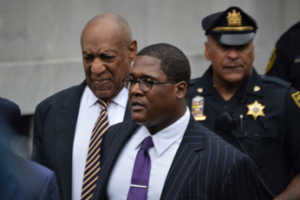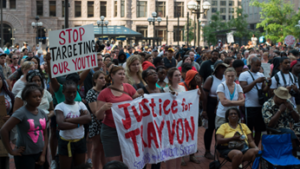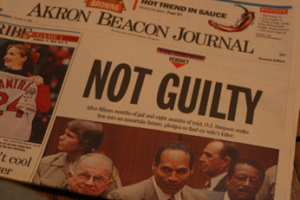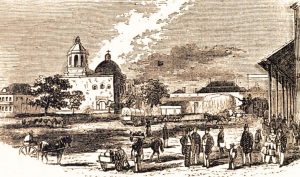The victor gets to write the history books. This has been the tried-and-true statement for many adversarial situations throughout history. Hence, this is still the case regarding the media coverage in the courtroom and the affairs brought before the court. Although some might say that what makes a case chock full of mass media coverage is simply the wealth of the parties involved in the case, this is caused by factors that draw attention to American society and cause media interest. Mass media has an intensive grip on the majority of American society. It can polarize people, form opinions, and make people question their positions. With this grand power, it only makes sense that even institutions such as our judicial system can both significantly impact it and be impacted by it. Furthermore, this is something that has been proven. Historically, mass media has constantly pushed print reporters and broadcasters to achieve the untainted and best representation of a court proceeding to help the public understand and receive the whole story.
Various push-backs have occurred in this field of reporting. For example, the American Bar Association encouraged and implemented a ban on courtroom cameras in the 1930s after a small town of 2500 citizens was descended upon by a swarm of 700 reporters and 130 cameramen. They were there to get the latest information on a high-profile case that was taking place in that small town. The large number of news people working in such a small area resulted in the escalation of tension between print and broadcast reporters, leading to the American Bar Association ban action. This ban stayed in place for about 50 years, making broadcasting trials in the courtroom a challenge. 1 However, the evolution and change in recent years have relaxed the restrictions on cameras in the courtroom. Mass media reporters and production teams exert a profound influence on the atmosphere within the courtroom, thereby impacting the outcomes of legal proceedings. This influence is evident in three landmark trials, where media coverage has proven pivotal in shaping public opinion and ultimately influenced the verdict handed down by the jury.

Introduction of Trials and Media Coverage
Media dynamics in and around the courtroom and their effects on trials are real, reoccurring, and have an impact on the atmosphere in the courtroom. The trials of O.J. Simpson, George Zimmerman, and Bill Cosby ascertain what was being covered by the media as the trials received initial coverage and publicity. Each one of these trials was fascinating and polarizing in its own right. Those who were around in the early 90s, probably can’t forget the trial of the century, the O.J. Simpson trial, which began on July 24, 1995, and involved Simpson’s ex-wife, Nicole Brown Simpson, and her friend Ronald Goldman. The crux of the case occurred on June 12, 1994, when Simpson’s ex-wife and Mr. Goldman were stabbed to death outside of her condominium in Brentwood, California. O.J. Simpson quickly became the prime suspect in the police investigation. 2 Because O.J. Simpson was a high-profile individual, his celebrity status and attempted aversion to capture broadcast this case to every American’s television sets and mind.
Another landmark case is the George Zimmerman case, which occurred in a gated community in Sanford, Florida. On February 26, 2012, Zimmerman shot and killed young Trayvon Martin, who was returning from a convenience store when he was spotted by Zimmerman, who was a supposed neighborhood watch volunteer. Zimmerman’s sighting of Trayvon Martin was reported to the police as “a real suspicious guy” looks like they are “up to no good, or he’s on drugs or something.” 3 When Zimmerman called 9-1-1, he was told not to follow Trayvon Martin but left his vehicle anyway to confront him. This action later resulted in the shooting and killing of an unarmed 17-year-old.
The third case is the criminal trial of Bill Cosby, which began on June 5, 2017, and his second trial, which began on April 2, 2018. Cosby was accused of multiple allegations, including alleged sexual assault, rape, and drug-facilitated sexual assault, to name a few. Although Bill Cosby had over 60 allegations of sexual assault and sexual misconduct with both adults and minors, the only incident that was included in criminal court was the one involving Andrea Constand. 4 The Simpson, Zimmerman, and Cosby trials demanded media attention that the public could not ignore. Their unique nature garnered a desire for truth amongst the community to satisfy their curiosity about each case. Needless to say, news outlets all across the country and in some parts of the world made it a point to highlight each case and ensure that it received its spotlight in the news.

Overview of Mass Media Coverage and Shaping Public Opinion
Each one of these trials happening in the United States created a unique reaction from the public. The fact that these trials were televised and broadcast to the public gave these trials a proper outlet, which facilitated, to a great extent, the public’s opinion of the trial. First and foremost, having the media in the courtroom wasn’t always a given when broadcasting a trial to the masses. Broadcast media lobbied for cameras in the courtroom, and technological advancement assisted the cause. It made it easier for a clearer picture of what was happening in the courtroom to be presented to the public without carrying an ensemble of large, clunky equipment that would distract and possibly visually obstruct the court proceedings. Television transitioned from a form of entertainment with a simple news operation using news readers as talent with limited visuals in the 1950s to more reliable and familiar news media in the 1960s. Cameras in the courtroom finally appeared in the late 1960s and early 1970s. Through this outlet, broadcasters finally provided mass media coverage by broadcasting the judicial process. It wasn’t until the 1980s, that many states had finally lifted the restriction on cameras in the courtroom. However, many federal courts, including the U.S. Supreme Court, still prohibit cameras and broadcasting within their chambers. 5
This push to gain access to broadcasting within the judicial process was backed by many arguments. A study reported, “Recent arguments over televised trials juxtapose purported advantages education about judicial processes, restoration of public confidence in the courts and crime deterrent value – against potential disadvantages – increase prejudicial publicity and public embarrassment of defendants.” 6 These findings provide advantages and disadvantages that result in allowing cameras in the courtroom. How trials are portrayed in the media has an overarching effect on shaping the public’s opinion and the verdict in the trials being covered. The effort to have cameras in the courtroom culminated in a system in which the broadcasters were allowed to bring the judicial system to everyday people in real time. In doing so, everyone was allowed to gain a window into the judicial process that used to be unknown to most. This not only allowed the public to witness the court but also allowed the public to begin forming educated opinions about what was being broadcast. The more media coverage the public is exposed to, the more disposition they may have leading into a case if they are selected as a juror. Jurors are selected from the community, and the community sometimes finds itself biased. Although the purpose of media is to inform, the community being informed about trials will form their own opinions and biases. 7
Media coverage of court proceedings has been viewed on the traditional broadcast networks, as well as new dedicated networks such as Law-TV and CSpan, which attempt to show uninterrupted court proceedings, often with little commentary. This platform has empowered audiences at home to form their own conclusions about the trials being broadcast. However, high-profile trials such as those involving O.J. Simpson, George Zimmerman, and Bill Cosby have revealed a different dynamic, particularly among major news networks like ABC, NBC, CBS, Fox, and CNN, which collectively reach the majority of Americans. These networks engaged in a precarious daily race to report on the cases and predict their outcomes, driven by the intense competition to capture and retain audience attention. This phenomenon underscores the media’s role in shaping public perceptions of legal proceedings and highlights the tension between providing unbiased coverage and satisfying the demand for dramatized narratives.
Media Influence Over Various Aspects of the Trials
Media played a pivotal part in the publicity of each of these trials. Mass media had already provided publicity before the trials began and shed light on the unfolding stories. For example, O.J. Simpson was not a new name; furthermore, what he was accused of was also not new by the time the trial finally rolled around. The media had already captured and documented each incident of the case before it was explained in court. The media had already been broadcasting the information about O.J. Simpson’s ex-wife and Mr. Goldman and facts about how the murder happened outside of her home. Furthermore, the media captured and documented the slow police chase of O.J. Simpson whilst he was driving his white Bronco, traveling to avoid arrest for two hours. An estimated 95 million viewers viewed aerial footage of the police chase. 8 Even before the trial was brought before the state court, the media portrayed this case to millions of viewers. Some of the viewers inevitably would become the jurors for this case. Finally, when the trial started, these jurors were already predisposed towards the case. All eight months’ worth of the trial were not only televised but became morning news and evening news, displaying and discussing the daily advancements of the trial. “From 17 June 1994 to 23 May 1995, 38 percent of all ABC Breaking News segments were devoted to O.J.” 9 There were specific parts of the case that jurors should not have taken into consideration for their verdict, such as the notion that Detective Mark Fuhrman denied any racial bias against African Americans and was caught lying under oath during cross-examination. Even though a witness testified to 13 hours of recorded interviews between 1985 and 1994 with Mr. Fuhrman, the judge overseeing the case, Lance A. Ito, only allowed two examples of racial slurs to be used by the detective and presented to the jury. However, examples of racial slurs were shown in court outside of the jury’s presence, and these examples were captured and shared through mass media. They were broadcast to all the viewers at home. 10 When the jury began to take into consideration the numerous instances of racial bias that were presented in the case, it would inevitably affect the verdict.
The George Zimmerman trial received gradual coverage from the start of the crime because initially, Zimmerman was not charged due to Florida law allowing deadly force to be used in self-defense. After the media began following the case, the community demanded Zimmerman be held accountable for the violent encounter that could have been avoided. He was eventually charged with second-degree murder. The trial was televised and received intense media coverage. 11 Furthermore, throughout the trial, different media outlets provided varying coverage of the story and broadcasted different perspectives and aspects of the case. Fox News considered a more conservative network, presented less information on the case than perceived liberal CNN and MSNBC were showing to their viewers. This contributed to a hodgepodge of predetermined opinions and perspectives on the incident. Fox News, primarily focused on the fact that Florida has a stand-your-ground law and that Zimmerman was acting within his constitutional right. While CNN and MSNBC were primarily focusing on the issue of gun control and the fact that an alleged neighborhood watchman took the life of an unarmed African-American child. 12 All of this media attention culminating around this particular issue led to a result of polarization and opinions among the public resulting in individuals forming their perception of the overall guilt or innocence of Zimmerman.
Mass media outlets played a pivotal role in forming opinions and ideas in the Bill Cosby trial case. Initial allegations of Bill Cosby’s sexual misconduct started in 2005 and continued for almost three decades until Bill Cosby experienced his first criminal courtroom trial in 2017. Because accusations persisted for as long as they did, the media played a more significant role in informing the public over time. The crimes against Bill Cosby were filed in Pennsylvania, and the Pennsylvania Supreme Court prohibits using cameras or recording devices in the courtroom. Therefore, neither the 2017 nor the 2018 criminal trials were televised. Yet despite this, with the aid of Twitter, blogs, and other forms of social media, mass media production companies were still able to capture the inside scoop on the daily events and the progression of the case as it moved through the judicial process, furthering information and polarization of what people had to consider for this trial. 13 It may be solely due to mass media reports that the 2018 trial ended differently than did the previous trial. 14 All of the media coverage before these trials debut in court essentially culminated in the prep work being done for people to already form a predisposed notion on their opinion of the case before it ever saw a day in court. And for the likes of the O.J. Simpson and Zimmerman trials, the jurors themselves could see how the media had played in the unraveling analysis impacted their own decisions about the case. These trials are poignant reminders of the immense power wielded by mass media, not only within the confines of the courtroom but also in shaping societal narratives on a broader scale.

Verdicts and Societal Reaction
The verdicts of the Simpson, Zimmerman, and Cosby trials resonated throughout American society, leaving enduring effects that underscored the significant role mass media plays in shaping the judicial process. Mass media was pivotal in the courtroom atmosphere and the masses’ polarization. Media coverage of Simpson’s trial played an exciting role in advancing what many people believed to be the fairness of the criminal justice system. However, the media coverage of the Simpson trial also brought light to domestic violence since it was one of the many aspects of the trial that was heavily emphasized. As a result, in the Los Angeles area, there was an increase of 80% in domestic violence calls after Simpson’s arrest, thanks to the media highlighting the issue. 15 The mere broadcasting in the courtroom was able to facilitate this bridge of information. Furthermore, another societal reaction to the case explored the notion that the police department could be racist. Mr. Simpson’s legal team hinted that Detective Fuhrman had racial motives for tampering and planting evidence such as a bloodied glove found on Simpson’s property. With this information being presented in the trial, it resulted in publicly about the case largely focused on racial bias being a leading factor in O.J. Simpson even being considered a suspect in this trial. Johnnie L. Cochran Jr., Mr. Simpson’s chief defense lawyer, branded Mr. Fuhrman a “lying, perjuring, genocidal racist.” Even though only two racial remarks were admitted into evidence, they helped introduce the doubts that led to Mr. Simpson’s almost immediate acquittal. To many, Mr. Fuhrman’s comments were proof of a deep-seated bias in the Los Angeles Police Department. 16 The media coverage of the George Zimmerman trial also brought about a public reaction and disposition to the case. The fact that this trial involved the shooting of an unarmed African American child gained momentum to the perceived injustices by police brutality, as well as led to a push for gun control. These responses were due to the media capturing a picture of this case and presenting the facts as they proceeded in the trial. Furthermore, the not guilty verdict of the George Zimmerman trial was brought to a close on July 13, 2013, fueled the anger people had, leading to the foundation of the Black Lives Matter movement. His acquittal brought about an even greater public upset, further solidifying the mass media’s role in the judicial process. 17
Bill Cosby’s trials were slightly different. When he was first criminally tried in 2017, the trial ended in a hung jury. However, in 2018, Cosby was found guilty on the same charges of drugging and sexually assaulting Mrs. Constand. “Because the trial and the retrial divided neatly into pre- and post- #MeToo events, Cosby’s case promised to show, in real-time, the legal impact of a young social movement. Anticipating the decision was like girding for a verdict on the movement itself.” 18 Both juries had the same gender and knowledge of the MeToo movement yet the second jury consisted of younger impressionable jurors that had taken into account the media and the controversy surrounding the case from the onset. In addition, due to a combination of the media coverage of the Cosby trial and the MeToo movement, more women volunteered and were allowed to give similar testimony against Cosby during the second trial, which backed Mrs. Constand. This helped secure a conviction. 19 Media played an exciting role in the court of public opinion. It was able to cater to and present real, authentic information on the trials at hand, which warranted their unique responses and ideas from their perspective movements and contributed to the courtroom’s underlying aspects and atmosphere, resulting in their respective verdicts.
The statement, “the victor gets to write the history books,” still rings true. It holds in the realm of courtroom proceedings and media coverage. It is a statement that has proved itself again and again throughout history. While some may attribute the extensive media attention to the parties’ wealth and societal factors, it ultimately drew attention and interest from the media. The media plays a pivotal role in the opinions and predispositions that the public carries with them. Mass media holds a powerful sway over American society, shaping options, polarizing people, and can prompt individuals to question their beliefs. Furthermore, it has also been proven that the media has impacted the courtroom atmosphere, not necessarily due to intention but rather because the media does a great deal of informing and, to some degree, presenting certain sides better than others. This culminates in a force that influences the courtroom and can polarize and contribute to forming public opinions and ideology, inevitably leading to verdicts and polarization in the court of public opinion.
- Mindy S. Trossman, “Tuning in to the Courtroom: A Brief History of Television and Criminal Trials,” Update on Law-Related Education 23, no. 1 (Winter 1999): 21-22. ↵
- Britannica, T. Editors of Encyclopaedia. “O.J. Simpson Trial.” Encyclopedia Britannica, March 5, 2024. https://www.britannica.com/event/O-J-Simpson-trial. ↵
- Munro, A. “Shooting of Trayvon Martin.” Encyclopedia Britannica, February 19, 2024. https://www.britannica.com/event/shooting-of-Trayvon-Martin. ↵
- “Bill Cosby,” Encyclopaedia Britannica, February 5, 2024. https://www.britannica.com/summary/Bill-Cosby. ↵
- Mindy S. Trossman, “Tuning in to the Courtroom: A Brief History of Television and Criminal Trials,” Update on Law-Related Education 23, no. 1 (Winter 1999): 23. ↵
- Barber, Sussan R., and Suzanna R. Barber. “Televised Trials: Weighing Advantages Against Disadvantages.” The Justice System Journal 10, no. 3 (1985): 279–91. http://www.jstor.org/stable/20877787. 279. ↵
- Greene, Edith. “Media Effects on Jurors.” Law and Human Behavior 14, no. 5 (1990): 439–450. http://www.jstor.org/stable/1393934. 439. ↵
- Britannica, T. Editors of Encyclopaedia. “O.J. Simpson Trial.” Encyclopedia Britannica, March 5, 2024. https://www.britannica.com/event/O-J-Simpson-trial. ↵
- Alderman, Derek H. “T.V. News Hyper-Coverage and the Representation of Place: Observations on the O. J. Simpson Case.” Geografiska Annaler. Series B, Human Geography 79, no. 2 (1997): 83–95. http://www.jstor.org/stable/490620. 83. ↵
- Stockman, Rachel. “O.J. Detective Mark Fuhrman: The Tapes and Pleading the Fifth.” Law & Crime, March 29, 2016. https://lawandcrime.com/high-profile/o-j-detective-mark-fuhrman-the-tapes-and-pleading-the-fifth/ ↵
- Munro, A. “Shooting of Trayvon Martin.” Encyclopedia Britannica, February 19, 2024. https://www.britannica.com/event/shooting-of-Trayvon-Martin. ↵
- “How Blogs, Twitter and Mainstream Media Have Handled the Trayvon Martin Case.” Pew Research Center’s Journalism Project, March 30, 2012. https://www.pewresearch.org/journalism/2012/03/30/special-report-how-blogs-twitter-and-mainstream-media-have-handled-trayvon-m/. ↵
- Puente, Maria. “What Effect Will Cosby Criminal Trial Have on Legal World or Celebrity World?” USA Today, May 25, 2016. https://www.usatoday.com/story/life/people/2016/05/24/what-effect-cosby-criminal-trial-have-legal-world-celebrity-world/84860316/. ↵
- Gersen, Jeannie Suk. “Bill Cosby’s Crimes and the Impact of #MeToo on the American l\Legal System.” The New Yorker, April 27, 2018. https://www.newyorker.com/news/news-desk/bill-cosbys-crimes-and-the-impact-of-metoo-on-the-american-legal-system. ↵
- Burleigh, Nina. “Preliminary Judgments: The Strategy to Try O.J. Simpson First in the Court of Public Opinion Makes His Scheduled Murder Trial More than a Search for Truth. It Raises Questions about Tactics That Could Influence a Verdict and Forces the Justice System to Confront Issues of Fairness, Race and Media Manipulation.” ABA Journal 80, no. 10 (1994): 55–61. http://www.jstor.org/stable/27835460. 60. ↵
- Sterngold, James. “Detective in Simpson Case Pleads No Contest to Perjury Count.” The New York Times, October 3, 1996. https://www.nytimes.com/1996/10/03/us/detective-in-simpson-case-pleads-no-contest-to-perjury-count.html. ↵
- Munro, A. “Shooting of Trayvon Martin.” Encyclopedia Britannica, February 19, 2024. https://www.britannica.com/event/shooting-of-Trayvon-Martin. ↵
- Gersen, Jeannie Suk. “Bill Cosby’s Crimes and the Impact of #MeToo on the American l\Legal System.” The New Yorker, April 27, 2018. https://www.newyorker.com/news/news-desk/bill-cosbys-crimes-and-the-impact-of-metoo-on-the-american-legal-system. ↵
- Gersen, Jeannie Suk. “Bill Cosby’s Crimes and the Impact of #MeToo on the American l\Legal System.” The New Yorker, April 27, 2018. https://www.newyorker.com/news/news-desk/bill-cosbys-crimes-and-the-impact-of-metoo-on-the-american-legal-system. ↵



7 comments
Fernando Milian
This article really dives deep into how mass media affects courtroom trials and public opinion. It’s crazy to think about how cameras in courtrooms and media coverage can change the way people see a trial, even before it starts. I never realized how much influence the media has, from deciding which details to show to possibly affecting the jury’s decision.
It’s especially interesting how big trials like those of O.J. Simpson, George Zimmerman, and Bill Cosby got so much attention that almost everyone had an opinion about them before the verdicts were even given. The media not only informs us but also shapes how we think about these cases. It’s a bit scary to think that what we see on TV or online could sway court outcomes and public reactions so strongly.
Maria Fernanda Guerrero
This article is extremely eye opening, I never realized or considered how deeply the media impacts the courtroom. Thank you for conveying this issue that still is occurring since it’s important to make the public aware of it due to its negative connotations such as fake news or misinformation. I was fascinated with your article. Congratulations on the nomination Deven!
Sebastian Hernandez-Soihit
Well-researched article about the confluence of the media and court outcomes, something that most people would not generally think about or see as having a correlation. I like that rules have been relaxed and enforced which allow for an empirical assessment of how these things interact with each other
Naya Harb
Wow, great topic Deven! This is a huge issue in today’s world with the fast pace of technology advancement happening. Misinformation happens all the time and it is hard to know what is real and what is not because of the media. The media is a controversial topic to me because it can be extremely helpful in some ways and in other ways it can be harmful. Great work on your article and congratulations on your nomination!
Leaya Valdez
The impact mass media have on the world is shocking but knowing that it goes as far as to impact the courtroom is what is the most shocking to hear. Knowing how the modern justice system can be easily affected by the media is a scary thing to think about. Shearing this information is very enlightening and many people should take knowledge of this since it is becoming more common as time progresses.
Vianna Villarreal
Great topic for an article! There is so much influence on humans through social media today. There is so much ability for opinion especially when it comes to political interest. Today it is very easy to see what happens in our world through the media along with countless ways people can become misinformed through the media. However it is still an effective tool for our society I think it has helped developed political interest along with political affiliation. But overall great work I really enjoyed your article.
Esmeralda Gomez
Reading about the influence of mass media in the courtroom and legal outcomes was a captivating journey into the complexities of modern justice. The depth of analysis and insights provided were truly commendable. Congratulations on your nomination, Deven! I hope to see more of your writing and interesting pick of topics in continuing to shed light on important societal issues.